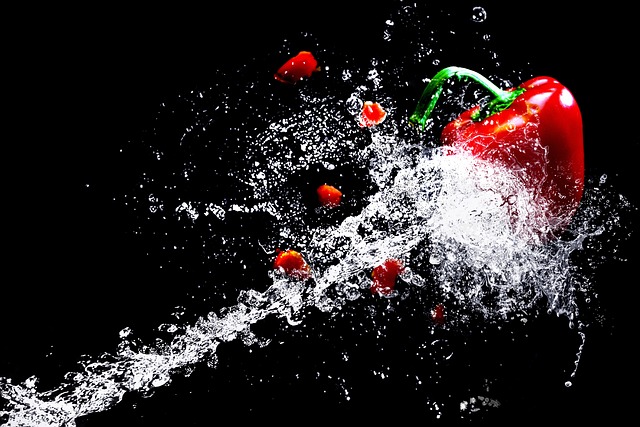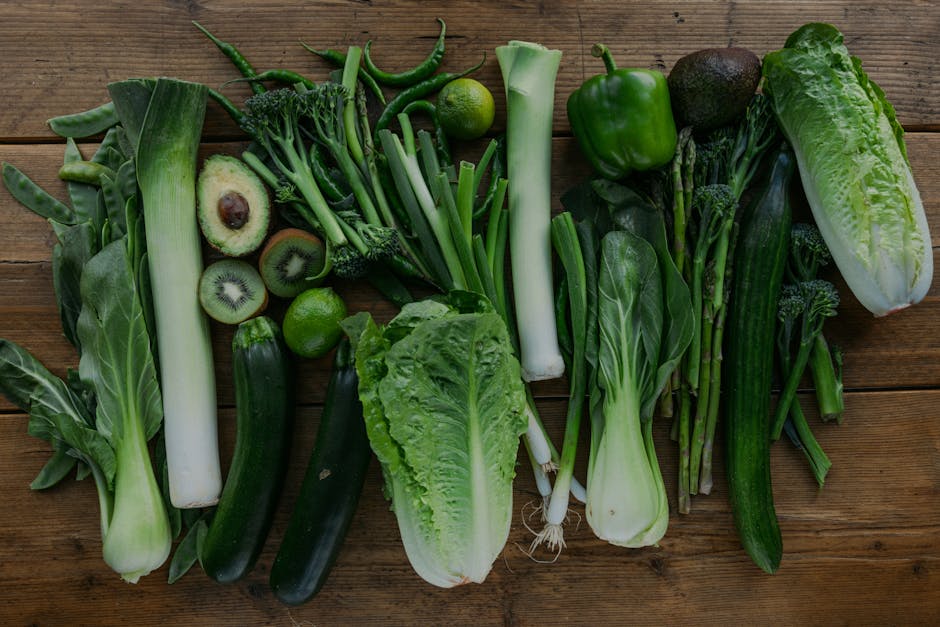The Big Picture
Why the Future of Food Matters More Than Ever
Food is more than fuel—it’s tied to our health, economy, environment, and cultural identity. As global populations rise and climate challenges intensify, the way we grow, produce, and consume food must evolve. The future of food isn’t a niche discussion—it’s a critical global conversation.
Key reasons the future of food is so important:
- Feeding a growing population: By 2050, the world population is projected to reach nearly 10 billion—demanding smarter food systems.
- Environmental impact: Agriculture accounts for nearly a quarter of global greenhouse gas emissions. How we produce food will directly affect our planet’s health.
- Health and accessibility: Ensuring nutritious, affordable food for all is essential in the fight against diet-related illnesses and food insecurity.
From Farms to Forks: Innovation Is Reshaping What We Eat
From soil sensors in the fields to AI in the kitchen, innovation is redefining every stage of the food chain. Agricultural automation, lab-grown proteins, and smart kitchens aren’t just futuristic concepts—they’re already changing how we interact with food.
Highlights of innovation throughout the food system:
- On the farm: Drones, AI, and robotics are optimizing yields and reducing waste.
- Food production: Novel processing methods and alternative protein sources are expanding what’s possible.
- In the kitchen: Home tech like smart ovens and digital meal planning apps bring more control and personalization.
Sustainability Meets Taste, Nutrition, and Culture
The food of the future isn’t just about efficiency—it must also deliver on flavor, nutrition, and cultural relevance. Consumers today care about where their food comes from and how it’s made, not just how it tastes.
Considerations driving the evolution of food:
- Sustainability: Eco-conscious production methods are gaining popularity and policy support.
- Nutrition: Science-backed personalization is helping people eat in ways that align with their unique needs.
- Cultural identity: Even as food tech evolves, there’s growing respect for traditional methods and local ingredients around the world.
The bottom line? The food landscape is shifting fast—but with the right priorities, this evolution has the power to serve both people and planet.
Alternative Proteins Go Mainstream
The protein aisle is no longer just beef, chicken, and tofu. 2024 is the year alternative proteins show their teeth. Lab-grown meat—real animal cells grown in bioreactors—is edging closer to consumer markets. A few countries already approve it in limited releases, and startups are racing to scale production and drop prices. It’s not quite ready for your local grocery store, but it’s closer than ever.
Plant-based meat alternatives have matured fast. The novelty factor is gone; now it’s all about texture, clean-label ingredients, and cost. Brands that once focused on mimicking burgers are expanding to steak, seafood, even whole cuts of chicken that look and feel more realistic. There’s still work to be done on processing and taste fatigue, but the category is solid.
Then there’s insect protein. Not your average dinner party topic, but it’s efficient, protein-rich, and gaining backing for animal feed and protein bars. Crickets and mealworms are being processed into cleaner, less noticeable forms—powders, flours, oils. In Europe and parts of Asia, regulation is loosening. In other regions, cultural acceptance is still miles behind.
The upside? Lower greenhouse emissions, less land and water usage, and fewer antibiotics. The ethical win: no slaughter. But questions still linger. Whether it’s the long-term health impact of heavily engineered ingredients or the energy footprint of lab-grown tech, the debate is very much alive. These innovations aren’t silver bullets—but they’re forcing us to rethink what meat really means, and how we can still enjoy it without draining the planet.
Smarter, Greener Agriculture
Farming is getting a hard reset. What used to rely on gut instinct and weather patterns is now backed by data, sensors, and AI models that predict everything from soil nutrient levels to pest outbreaks.
Precision farming is cutting waste and boosting output. Drones scan fields. Machine learning tools adjust irrigation in real-time. Fertilizer only hits the spots that need it. It’s not glamorous, but this kind of optimization matters when the planet’s stretched thin—on resources, land, and time.
Urban farming is also more than a buzzword now. Vertical farms and hydroponic systems are stacking fresh produce in cities like Tokyo, London, and New York. No soil, no sun, minimal water. Crops grow on shelves under LED lighting, just blocks from where they’re eaten. It’s hyper-local, low-emission, and fast—harvest today, sell tomorrow.
At the heart of it all is a climate problem we can’t ignore. Smarter farming isn’t just about better yields—it’s about survival. AI that helps farmers adapt to drought. Indoor systems that sidestep erratic weather. Crops tailored to tougher environments. These solutions aren’t trends; they’re lifelines.
Agriculture in the future is about control—of inputs, of variables, and of impact.
Personalized Nutrition
One-size-fits-all diets are dying. In their place: plans built on your DNA, your microbiome, and a dozen other biomarkers that say more about you than any food pyramid ever could. Companies are decoding our guts and bloodwork to suggest not just what we should eat—but exactly when, how much, and even why our metabolism acts the way it does.
Wearables are taking this a step further. Glucose monitors, hydration trackers, and metabolic sensors aren’t just for athletes anymore. They’re in everyday kitchens, showing users in real time what that smoothie did to their blood sugar or how yesterday’s sleep skewed today’s cravings. The feedback loop is tight—and people are using it to fine-tune how they feel, not just how they look.
There’s also a shift from discipline to delight. Customized doesn’t mean boring. The science now matches flavor with function, letting people discover meals that support better energy, deeper sleep, or sharper focus—without giving up taste. Tailored eating isn’t about restriction anymore. It’s about upgrading the experience.
The Tech on Our Plate
As technology continues to transform every corner of our lives, it’s no surprise that our kitchens—and the food itself—are evolving too. From futuristic food formats to intelligent home appliances, food tech is rapidly reshaping how, what, and even why we eat.
3D-Printed Food: Customization on Demand
What once seemed like sci-fi is now a growing niche in food innovation. 3D-printed foods are stepping into both commercial kitchens and experimental home dining. But are they practical, or just performative?
Practical Uses:
- Custom nutrient blends for seniors or hospital patients
- Intricate restaurant plating and edible art
- Specialized diets tailored layer by layer
Challenges:
- Slower than traditional food prep in most homes
- High cost of equipment and materials
- Requires training or pre-programmed recipes
Bottom Line: 3D-printed foods may not replace your home-cooked meals anytime soon, but in terms of customization and nutritional precision, they’re opening new doors.
Smart Kitchen Appliances Are Learning From You
Today’s kitchen is quietly becoming your culinary co-pilot. Thanks to AI integration and IoT connectivity, appliances are more helpful—and intuitive—than ever.
Emerging Features Include:
- Ovens that automatically adjust temperature based on dish type
- Refrigerators that track expiry dates and suggest recipes
- Coffee machines that remember your morning routine and preferences
Impact on Daily Cooking:
- Reduces meal prep anxiety for busy households
- Drives healthier eating habits through reminders and meal suggestions
- Bridges the gap between convenience and creativity
Startups Pushing the Edge (and the Culture)
Food tech startups are doing more than improving gadgets—they’re shifting the cultural lens on what food can be. These companies are rethinking recipes, expanding access, and marrying technology with tradition.
Noteworthy Trends:
- Robotic chefs making regional cuisines at scale
- Platforms that blend global street food with data-driven personalization
- Culturally-driven food brands using AI to reimagine traditional flavors
Why It Matters: These startups are redefining tradition, not replacing it—showing how innovation can celebrate heritage while solving modern food challenges.
Takeaway
Food tech is no longer just about convenience—it’s about expanding culinary possibility, reconnecting us with what we eat, and building a future where flavor, nutrition, and innovation live in harmony.
Rethinking Food Waste and Packaging
Food waste isn’t just waste—it’s missed opportunity. In 2024, forward-thinking food brands and creators are treating every peel, pulp, and package as a chance to do better. The shift is clean and clear: ditch disposables, close loops, and get smart about scraps.
Edible packaging has moved from gimmick to function. Think rice paper wrappers that dissolve in broth, or seaweed-based films replacing plastic snack bags. Compostable containers are standard for newer DTC food startups, and major players are scrambling to catch up. The bar is rising fast.
Ingredient upcycling is also gaining edge. Brands are transforming spent grain from breweries into protein flour, or turning fruit pulp from juicing into energy bars. This isn’t charity—it’s profit with purpose. Circular models are leaner, often cheaper, and increasingly demanded by eco-conscious buyers.
The zero-waste kitchen is no longer a niche project. It’s an operational model. From Michelin-rated restaurants to TikTok chefs, cooks are showcasing every scrap as part of the story. Not because it’s cute—but because it works. Efficiency is no longer behind-the-scenes. It’s the main act.
The Future Is Also in the Past
As food tech races ahead, a surprising number of people are turning back—way back. In kitchens around the world, ancient methods are making a quiet comeback. Not as nostalgia, but as a real solution to today’s fast, disposable food culture.
Fermentation is no longer a fringe hobby—it’s a full-on revival. From kimchi and sourdough to kombucha and natto, people are drawn to the deep flavors, gut health benefits, and almost meditative process of slow preparation. It’s intentional, hands-on, and oddly calming in a scroll-driven world.
Then there’s foraging. More than a TikTok trend, it’s about reconnecting with land and place. Urban edible walks, mushroom hunts, backyard weeds turned into greens—this is low-impact eating with a dose of real adventure. It doesn’t just change what’s on the plate. It shifts how we see food itself: not a product, but a relationship.
And let’s not overlook slow food. Meals that take hours to cook and even longer to share don’t fit into the standard productivity model—but maybe that’s the point. People are carving out time for connection, flavor, and old-world techniques that don’t require an app. These traditions have survived because they work. Now, they’re being re-discovered, exactly when we need them most.
For more historical depth behind this comeback, check out Food History: Uncovering the Origins of Popular Dishes.
What to Watch
As food innovation accelerates, the landscape ahead is as complex as it is exciting. From policy to palate, several emerging issues will define how we move forward.
Regulatory Challenges: Navigating the New Food Frontier
Innovation often arrives faster than regulation can catch up. In 2024 and beyond, expect increasing scrutiny and debate around food safety, transparency, and ethical production.
- Genetically Modified Organisms (GMOs): As new gene-editing techniques emerge, labeling and traceability remain a concern for both regulators and consumers.
- Lab-grown and Alternative Proteins: Approval protocols differ by country, creating uncertain global standards.
- Food Labeling & Claims: Terms like “natural,” “sustainable,” and “organic” are under stricter review to curb misleading marketing.
- Digital Track-and-Trace: Technologies like blockchain may become central to enforcing safety and traceability standards.
Shifting Consumer Tastes: What’s Here to Stay?
Consumer values are changing, and food culture is evolving in response to deeper priorities beyond flavor alone.
- Sustainability Matters: Shoppers are favoring local, low-impact, and ethically produced foods.
- Flavor Adventure: Global and fusion cuisines continue to gain popularity, with appetite for novelty growing.
- Functional Foods: Products promising mental clarity, gut health, and immune support are becoming kitchen staples.
- Mindful Eating: Slower, intentional consumption is winning out over fast and processed foods.
Final Thoughts: Progress, With Purpose and Flavor
The future of food isn’t just about technology or sustainability in silos—it’s about meaningful integration.
To move forward responsibly:
- Balance innovation with ethics and accessibility
- Preserve cultural diversity while adapting to global challenges
- Design solutions that serve both the planet and the plate
It’s clear that food is no longer just about what we eat, but why—and how—we eat it. In shaping the meals of tomorrow, we’re also shaping the world we want to live in.


 Charles brings his sharp eye for detail and love of global cuisine to FoodHypeSaga. His writing dives into food culture, exploring fresh trends and unique flavors with a modern perspective.
Charles brings his sharp eye for detail and love of global cuisine to FoodHypeSaga. His writing dives into food culture, exploring fresh trends and unique flavors with a modern perspective.

